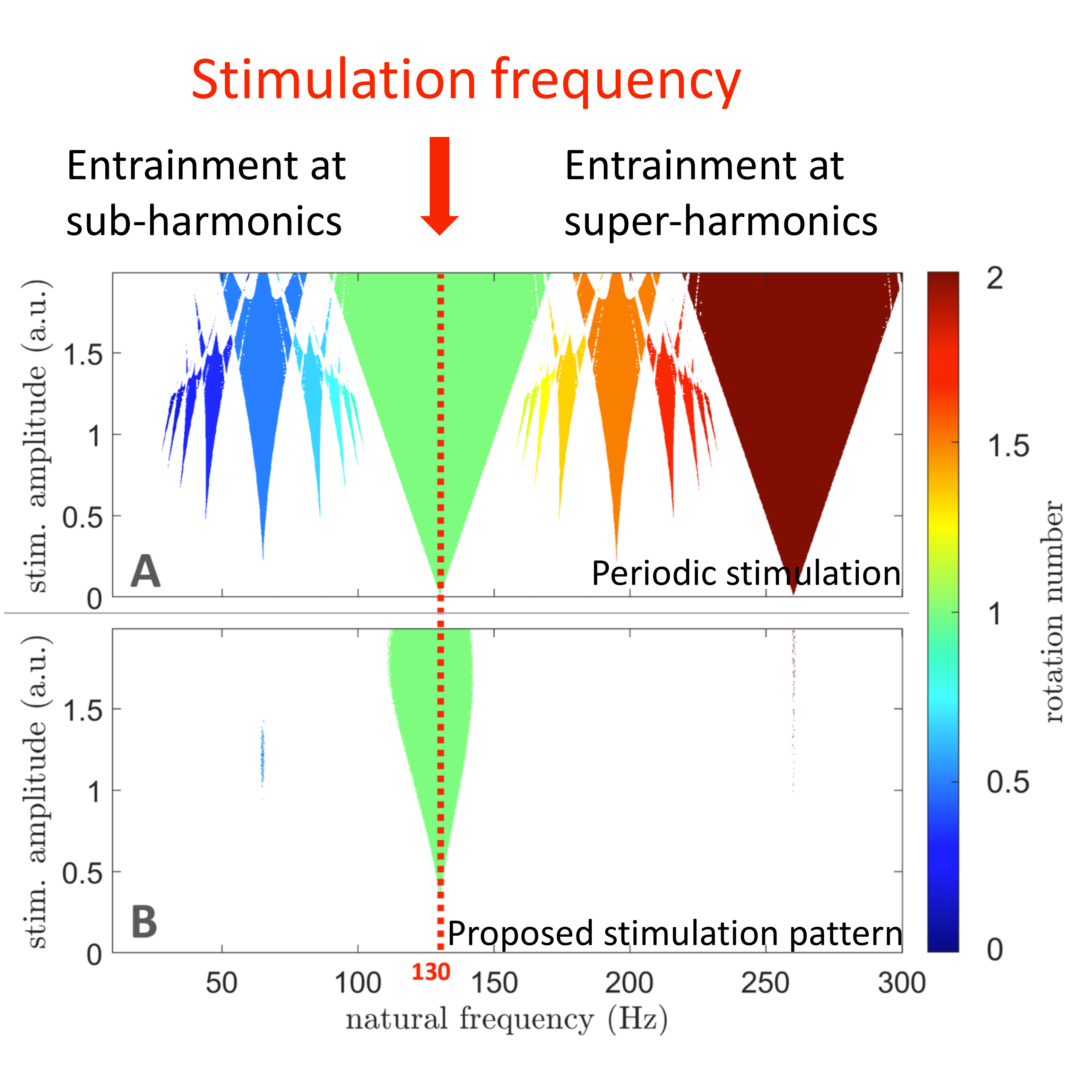How to entrain a selected neuronal rhythm but not others: open-loop dithered brain stimulation for selective entrainment.
Brain stimulation can have unintended effects at different ratios of the stimulation frequency (e.g. half the stimulation frequency or twice the stimulation frequency). Here, we propose modified stimulation patterns in order to avoid these unintended effects which could be harmful to patients.
While brain stimulation therapies such as deep brain stimulation for Parkinson's disease (PD) can be effective, they have yet to reach their full potential across neurological disorders. Entraining neuronal rhythms using rhythmic brain stimulation has been suggested as a new therapeutic mechanism to restore neurotypical behaviour in conditions such as chronic pain, depression, and Alzheimer's disease. However, theoretical and experimental evidence indicate that brain stimulation can also entrain neuronal rhythms at sub- and super-harmonics, far from the stimulation frequency. Crucially, these counterintuitive effects could be harmful to patients, for example by triggering debilitating involuntary movements in PD. We therefore seek a principled approach to selectively promote rhythms close to the stimulation frequency, while avoiding potential harmful effects by preventing entrainment at sub- and super-harmonics.Our open-loop approach to selective entrainment, dithered stimulation, consists in adding white noise to the stimulation period.We theoretically establish the ability of dithered stimulation to selectively entrain a given brain rhythm, and verify its efficacy in simulations of uncoupled neural oscillators, and networks of coupled neural oscillators. Furthermore, we show that dithered stimulation can be implemented in neurostimulators with limited capabilities by toggling within a finite set of stimulation frequencies.Likely implementable across a variety of existing brain stimulation devices, dithering-based selective entrainment has potential to enable new brain stimulation therapies, as well as new neuroscientific research exploiting its ability to modulate higher-order entrainment.

2023. J Neural Eng, 20(2).
2023. Brain Stimul, 16(5):1412-1424.
2021. J Neural Eng, 18(4):046023.
2022. Exp Neurol, 351:113999.